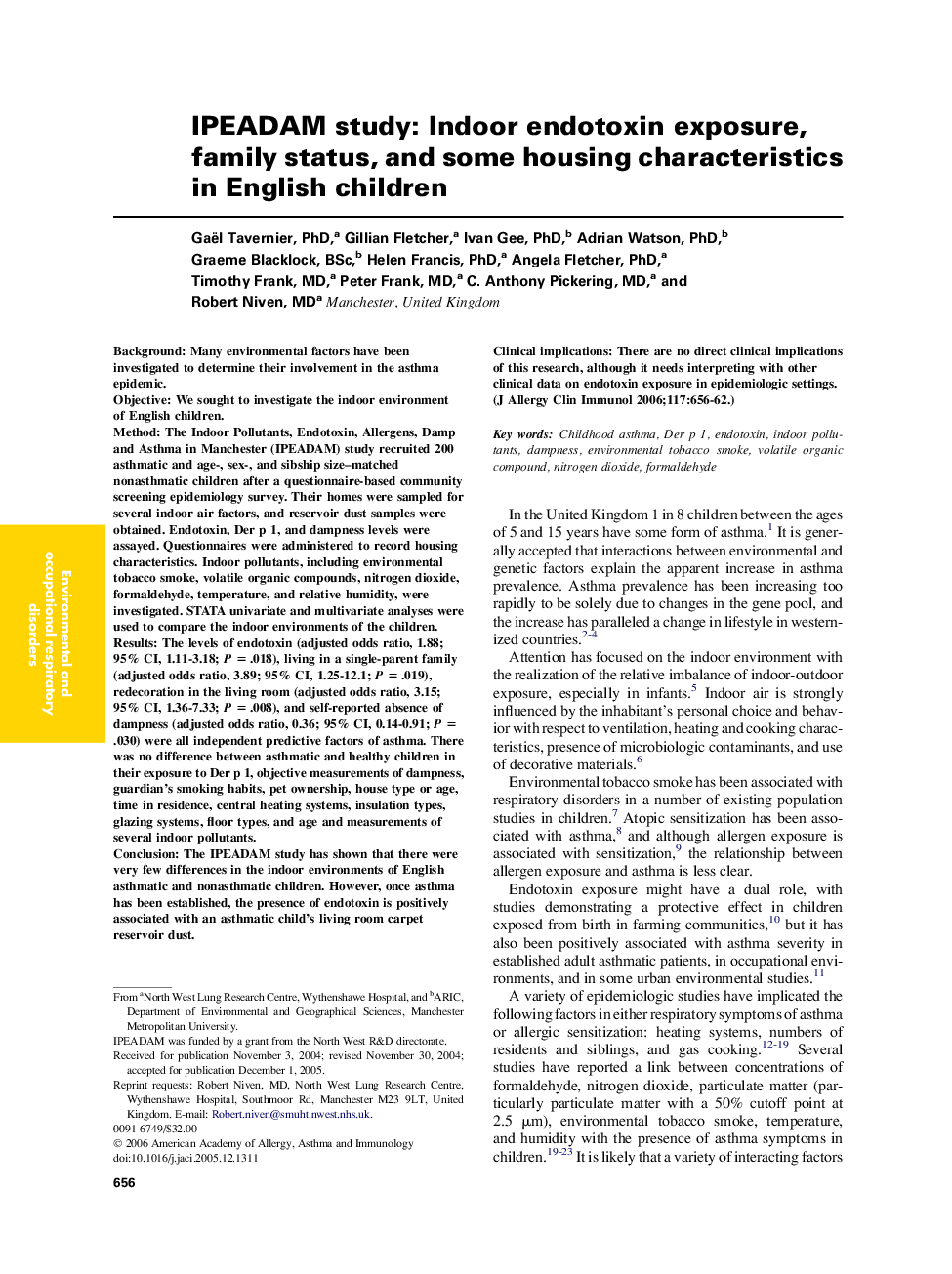| کد مقاله | کد نشریه | سال انتشار | مقاله انگلیسی | نسخه تمام متن |
|---|---|---|---|---|
| 3203778 | 1202016 | 2006 | 7 صفحه PDF | دانلود رایگان |

BackgroundMany environmental factors have been investigated to determine their involvement in the asthma epidemic.ObjectiveWe sought to investigate the indoor environment of English children.MethodThe Indoor Pollutants, Endotoxin, Allergens, Damp and Asthma in Manchester (IPEADAM) study recruited 200 asthmatic and age-, sex-, and sibship size–matched nonasthmatic children after a questionnaire-based community screening epidemiology survey. Their homes were sampled for several indoor air factors, and reservoir dust samples were obtained. Endotoxin, Der p 1, and dampness levels were assayed. Questionnaires were administered to record housing characteristics. Indoor pollutants, including environmental tobacco smoke, volatile organic compounds, nitrogen dioxide, formaldehyde, temperature, and relative humidity, were investigated. STATA univariate and multivariate analyses were used to compare the indoor environments of the children.ResultsThe levels of endotoxin (adjusted odds ratio, 1.88; 95% CI, 1.11-3.18; P = .018), living in a single-parent family (adjusted odds ratio, 3.89; 95% CI, 1.25-12.1; P = .019), redecoration in the living room (adjusted odds ratio, 3.15; 95% CI, 1.36-7.33; P = .008), and self-reported absence of dampness (adjusted odds ratio, 0.36; 95% CI, 0.14-0.91; P = .030) were all independent predictive factors of asthma. There was no difference between asthmatic and healthy children in their exposure to Der p 1, objective measurements of dampness, guardian's smoking habits, pet ownership, house type or age, time in residence, central heating systems, insulation types, glazing systems, floor types, and age and measurements of several indoor pollutants.ConclusionThe IPEADAM study has shown that there were very few differences in the indoor environments of English asthmatic and nonasthmatic children. However, once asthma has been established, the presence of endotoxin is positively associated with an asthmatic child's living room carpet reservoir dust.Clinical implicationsThere are no direct clinical implications of this research, although it needs interpreting with other clinical data on endotoxin exposure in epidemiologic settings.
Journal: Journal of Allergy and Clinical Immunology - Volume 117, Issue 3, March 2006, Pages 656–662